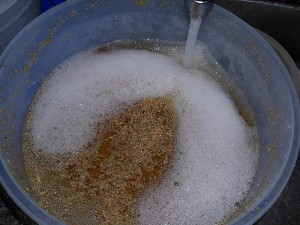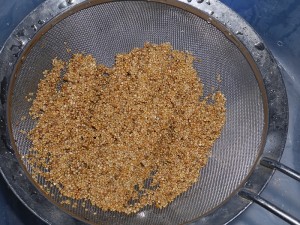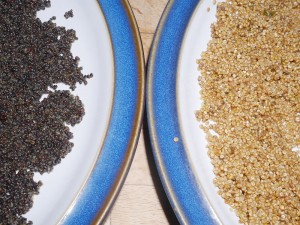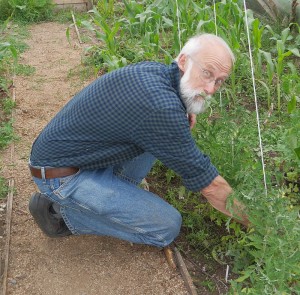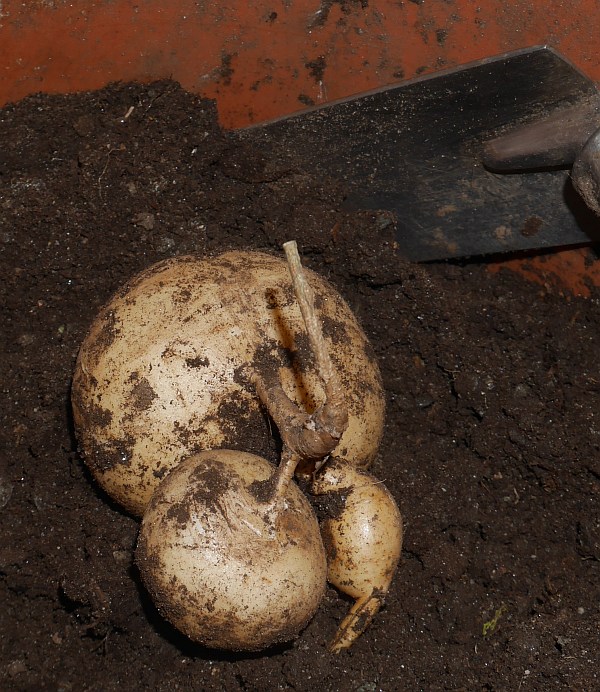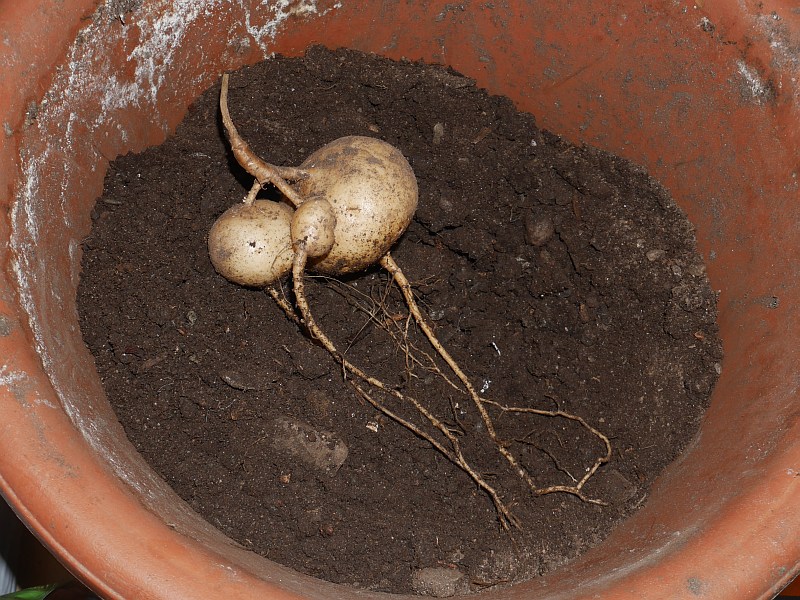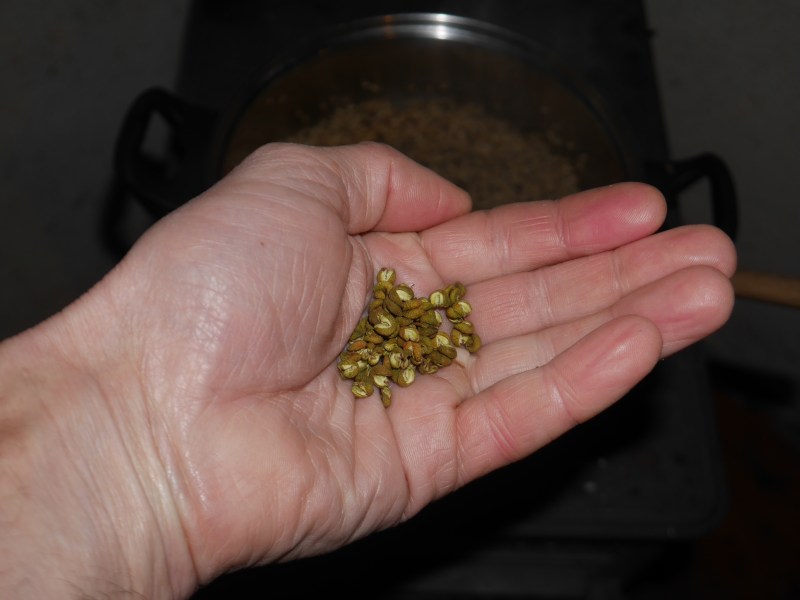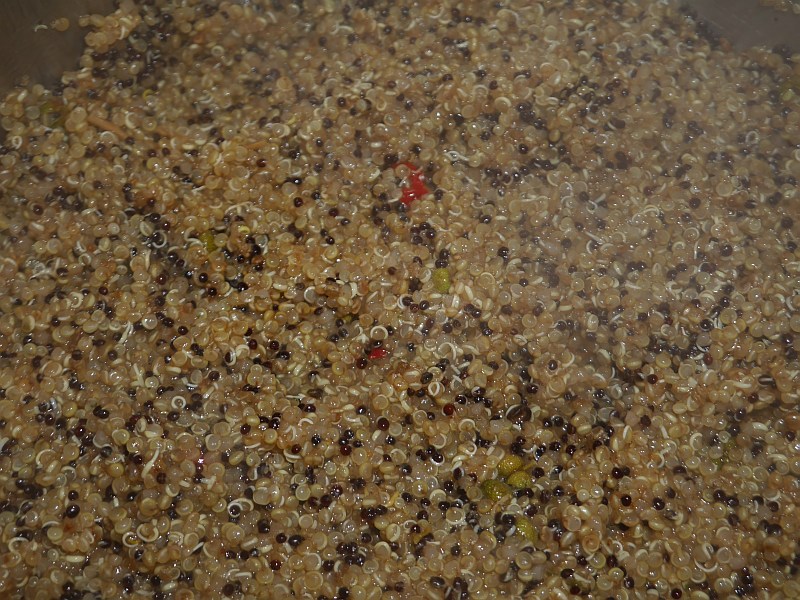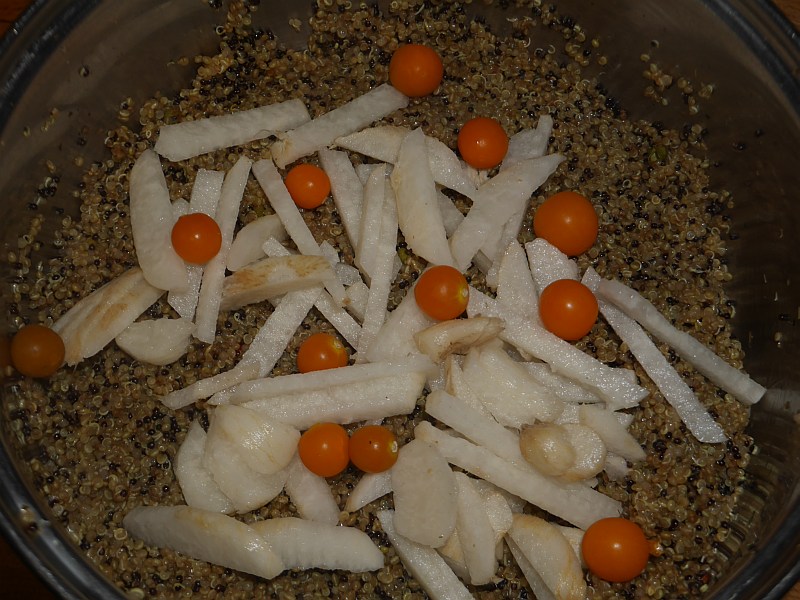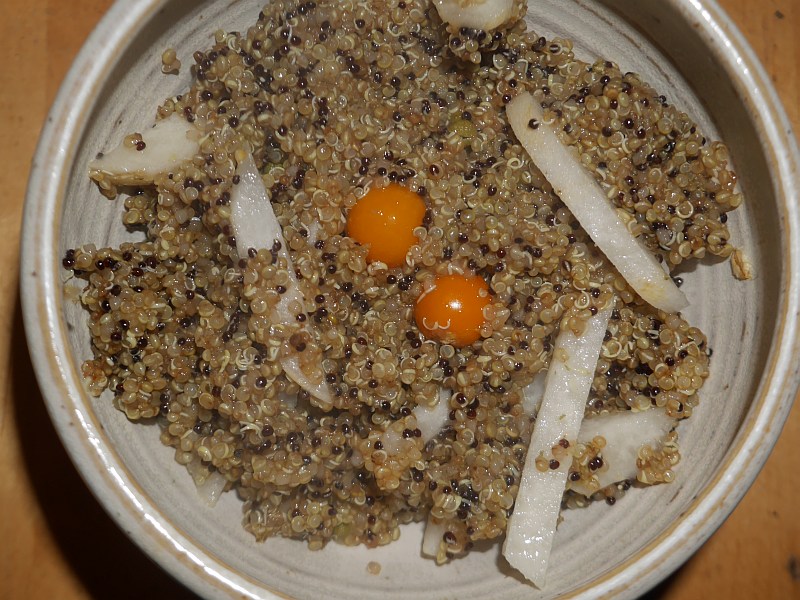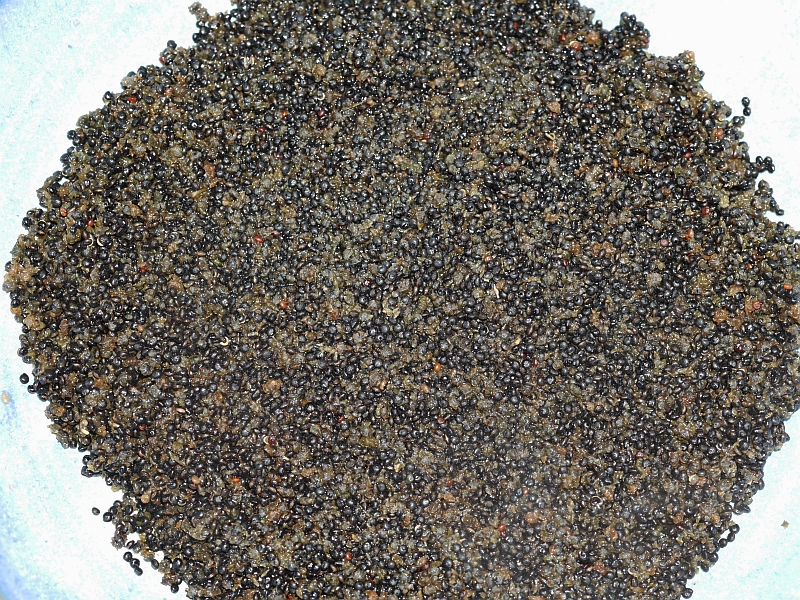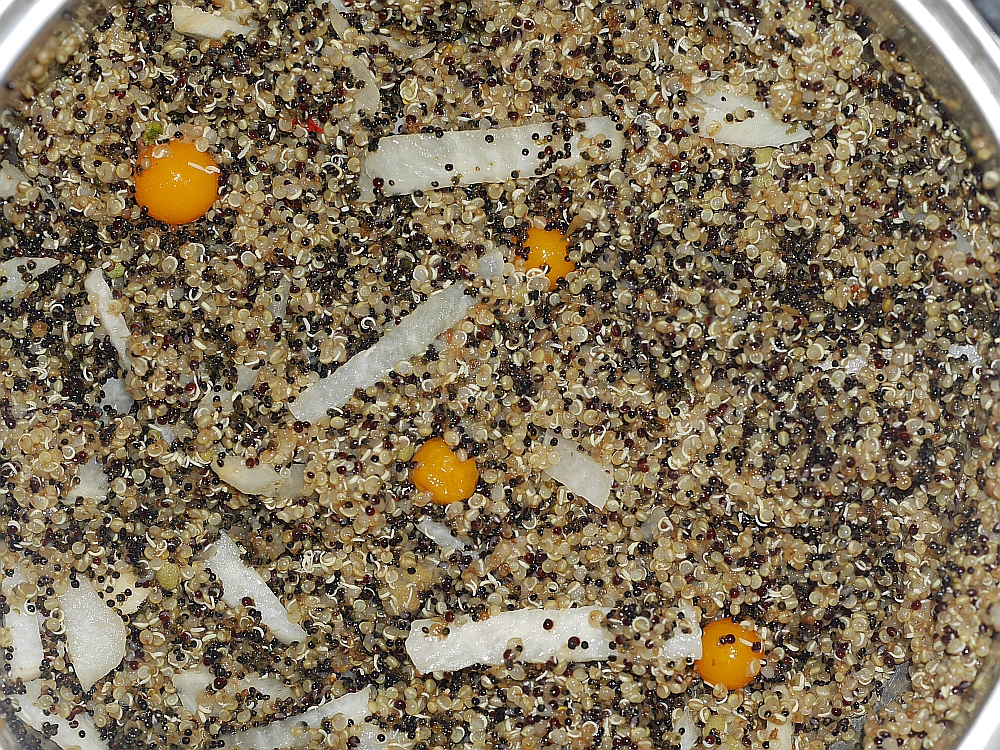Tag Archives: Fat Hen
Jicama-ahipa à la Henry quinoa
One of the culinary highlights of the year is the annual Jicama (hee-ka-ma) meal….if you’ve never eaten yam beans or Jicama (Pachyrhizus erosus), you haven’t lived!
I grow this subtropical vegetable in my office, which only gets sunlight for maximum 1 hour a day which isn’t optimal conditions (they are usually grown in open fields), but being a climber originates in forests, so it tolerates shade. I grew it’s brother on-climbing Ahipa (Pachyrhizus ahipa) beside it, but that species didn’t produce much (perhaps it’s more sensitive to light?). I also didn’t think the taste was as good. Both species died down at the end of the year and I harvested the tubers in early January!
Jicama tubers are best eaten raw and are crispy and a little sweet. Being one of the lost crops of the Incas, much more popular in the Americas than in Europe, I served them sliced with a cooked quinoa mix – mixed home grown Quinoa and black-grained Henry quinoa from Good King Henry (Chenopodium bonus-henricus), flavoured with chilis and lemony sanshō seeds (Zanthoxylum piperitum or Japanese pepper).
NB! Both species, Ahipa and Jicama are normally started from seed which I haven’t succeeded in growing myself!
Day Two: I didn’t eat it all yesterday, I needed a bit more, so I cooked up a third species quinoa, Fat Hen quinoa (Meldestokk quinoa), from the seed of one plant of Fat Hen or Lamb’s Quarters (Chenopodium album). It was added to yesterday’s to give a Three species quinoa and jicama salad (two pictures added)
Cleaning quinoa seed
I’ve found the easiest way to clean quinoa and seed of other Chenopods is using water…the seed sinks and the chaff floats…after separating, the seed is dried…
